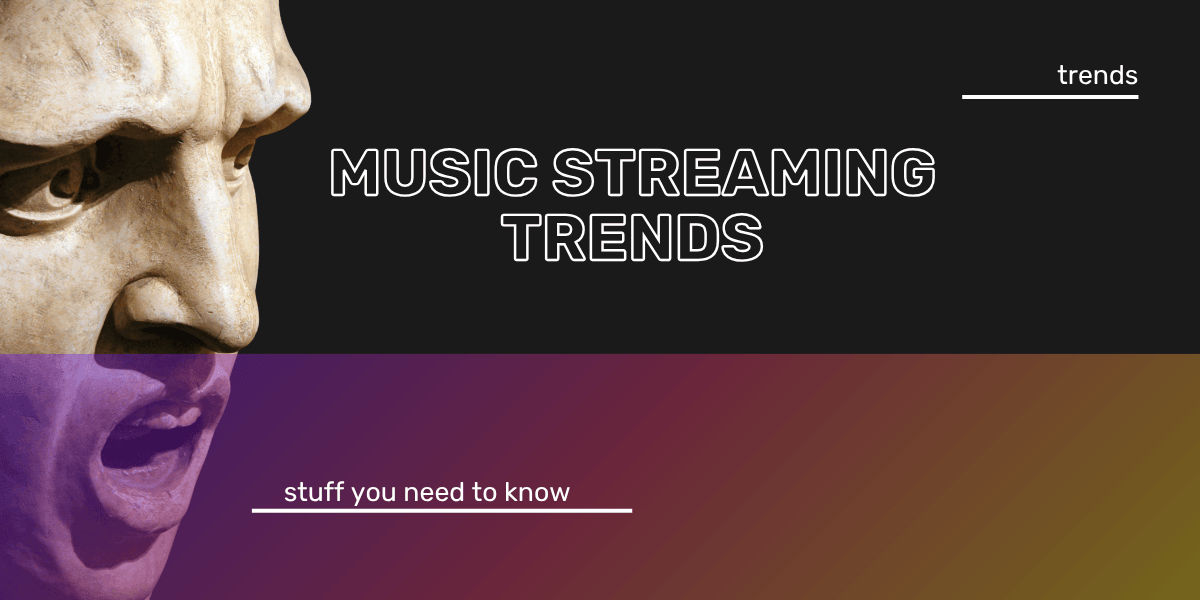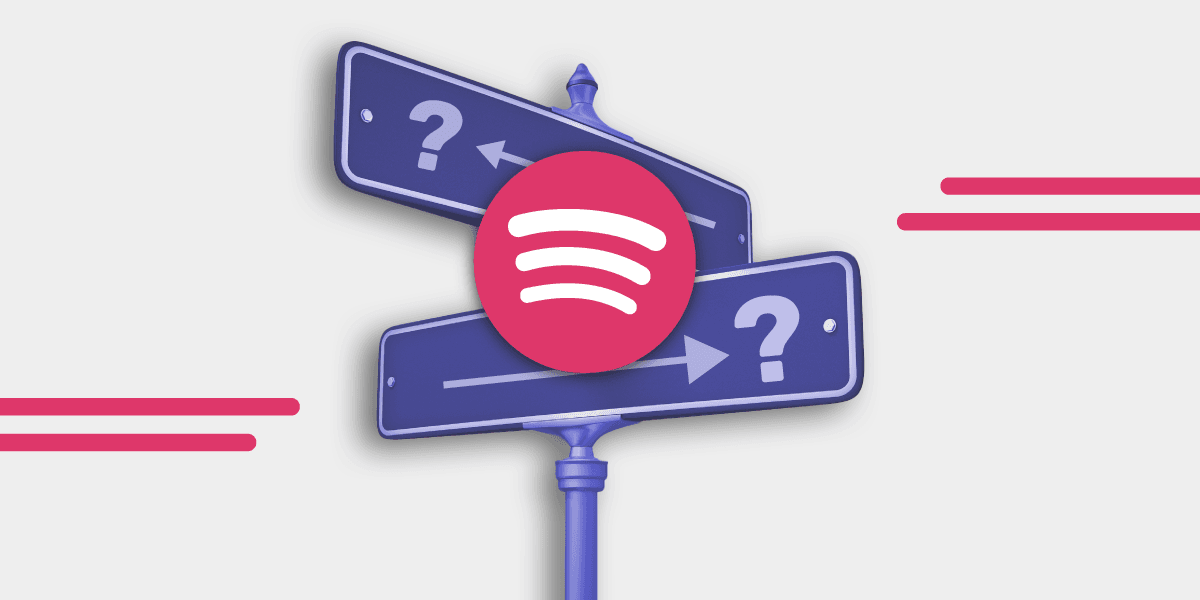Music streaming has become far more than just a convenient way to play songs. Today's platforms link millions of listeners globally and generate fresh trends and possibilities. What's surprising is that streaming already accounts for over 80 percent of worldwide music revenue. Many people think this trend will just keep rolling. But the real transformation is still ahead, as artificial intelligence, personalization, and cutting-edge technologies are about to completely redefine how we discover music.
Table of Contents
- What are music streaming trends and why do they matter?
- The dynamics of music streaming evolution
- Why music streaming trends matter
- How music streaming services evolved in the digital era
- Where digital music streaming began
- Today’s music streaming ecosystems
- How artificial intelligence shapes music selection
- How AI-driven music recommendations work
- Personalization and ethical questions
- User experience and personalization: the core elements
- Building personalized music experiences
- Technology behind user experience
- Looking ahead: where is music streaming going?
- Technology convergence and innovation
- Economic and creative shifts
Quick Summary
| Takeaway | Explanation |
|---|---|
| Music streaming transforms how we consume music | Streaming platforms aren't just services—they're cultural gatekeepers shaping the music landscape. |
| AI drives better personalization | Machine learning algorithms parse music patterns and user habits to craft individual experiences. |
| Technology creates new discovery opportunities | Fresh features help listeners find new artists and genres regardless of geography. |
| The future is interactive and dynamic | VR and AR integration will fundamentally reshape and personalize how we experience music. |
| AI raises ethical concerns | Using AI for music recommendations demands attention to creative diversity and avoiding echo chambers. |
What are Music Streaming Trends and Why Do They Matter?
Music streaming trends capture the ongoing evolution and transformation of the digital music world. They represent shifting consumer preferences, technological breakthroughs, and service models that reshape how people consume, discover, and experience music.
The Dynamics of Music Streaming Evolution
Music streaming evolves at breakneck speed and extends well beyond simply playing tracks. It's an intricate ecosystem linking technology, artist interests, user behavior, and global music movements. Current music industry analysis reveals that streaming services aren't merely music platforms—they're cultural carriers and discovery hubs for emerging sounds and talent.
The importance of music streaming trends stems from several critical factors:
- Technology Transformation: Ongoing refinement of streaming algorithms
- Personalized Music Journeys: Custom-curated playlists and recommendations
- Global Music Connectivity: Breaking down geographic music barriers
Why Music Streaming Trends Matter
These trends are essential for music lovers, artists, and tech companies alike. They don't just influence how music gets consumed—they affect how artists get discovered, paid, and supported. Research from the Music Research Institute shows that streaming trends directly impact music production, artist earnings, and listener experiences.
To grasp current developments, check out our music streaming news guide, which provides deeper insights into the dynamic streaming landscape.
The future of music streaming isn't fixed—it's an ongoing, dynamic process that weaves together technology, creativity, and user experience.
How Music Streaming Services Evolved in the Digital Era
The story of music streaming services is a compelling tale of technological innovation and cultural shift. From early digital music transmission to today's sophisticated, intelligent platforms, streaming services have fundamentally altered how people experience music.
Where Digital Music Streaming Began
Music streaming emerged from simple internet radios and peer-to-peer networks. Technology research shows that first-generation streaming services mainly grappled with challenges like audio quality, bandwidth limitations, and rights management. Musicians and platforms needed to create new business models ensuring fair payment and legal music distribution.
Core elements of early streaming development included:
- Technical Foundation: Better internet speeds
- Legal Structure: Creating licensing frameworks
- User Experience: Developing accessible music platforms
Today's Music Streaming Ecosystems
Modern music streaming services are sophisticated ecosystems offering much more than playback. They blend artificial intelligence, personalized recommendation engines, and social interaction features. Digital music analysts stress that today's platforms don't just stream music—they enable music discovery, artist development, and global music connections.
Our music transfer platform helps users move seamlessly between streaming services while maintaining their music collections.
Music streaming's future will be driven by technologies like machine learning, enhanced personalization, and immersive music experiences. It's a dynamic space continuously generating new opportunities for musicians, listeners, and tech companies.
This table provides a snapshot of key characteristics and developments in music streaming, showing the shift from early days to modern ecosystems.
| Aspect | Early Music Streaming | Modern Streaming Ecosystems |
|---|---|---|
| Technical Foundation | Restricted bandwidth, basic internet radios | High-powered servers, cloud storage, mobile access |
| Legal Structure | License difficulties, rights complications | Streamlined licensing models, fair use rules |
| Personalization | Minimal, generic playlists | Custom AI recommendations, curated profiles |
| Artist Support | Limited monetization options | Global reach, direct artist development |
| Music Discovery | Restricted, mostly popular tracks | Broad genre variety, tailored recommendations |
How Artificial Intelligence Shapes Music Selection
Artificial intelligence is progressively revolutionizing how people discover, consume, and experience music. It's transforming music streaming platforms from basic playback services into intelligent, personalized music ecosystems.
How AI-Driven Music Recommendations Work
Contemporary AI algorithms parse complex music patterns and user preferences with accuracy that far surpasses human curators. Scientific research demonstrates that machine learning algorithms don't just identify genre preferences—they factor in subtle emotional and contextual elements in music selection.
Core components of AI-powered music recommendations include:
- Audio Analysis: Identifying musical structures and emotional tones
- Behavioral Forecasting: Predicting future music preferences
- Context Awareness: Factoring in time of day, activity, and mood
Personalization and Ethical Questions
AI-driven personalization extends far beyond conventional recommendation systems. Digital music analysts point out that modern AI systems craft multidimensional music experiences considering individual tastes, cultural backgrounds, and personal evolution.
Our Spotify statistics show how AI algorithms monitor and interpret your personal music journey.
Meanwhile, AI's growing use raises crucial ethical questions: How do we build algorithms that encourage musical diversity without creating creative echo chambers? The challenge is leveraging technology that broadens music discovery instead of narrowing it.
This table breaks down how artificial intelligence operates on music platforms, summarizing key mechanisms and their impact.
| AI Mechanism | How It Works | User Benefits |
|---|---|---|
| Audio Analysis | Parses musical structures and mood components | Delivers music fitting your current mood |
| Behavioral Forecasting | Predicts future preferences from past listening | Provides forward-looking, personalized recommendations |
| Context Awareness | Factors in time, activity, and emotional state | Ensures music suits the situation |
User Experience and Personalization: The Core Elements
User experience and personalization form the foundation of modern music streaming platforms. They transform digital music consumption from passive listening into an interactive, individualized journey that dynamically responds to personal preferences and life circumstances.
Building Personalized Music Experiences
Digital usage research demonstrates that modern streaming services don't just play music—they construct complex user experiences. These experiences rely on multi-layered algorithms simultaneously analyzing music taste, listening patterns, and contextual factors.
Core personalization elements include:
- Context Intelligence: Adjusting to time of day, activity, and emotional condition
- Dynamic Playlist Creation: Real-time modification of music recommendations
- Individual Music Profile: Building a personal music identity
Technology Behind User Experience
User experience extends well beyond basic recommendation algorithms. Tech experts emphasize that modern platforms craft an immersive journey connecting music consumption, social interaction, and emotional connection.
Our Spotify statistics give you deep visibility into how your personal music journey gets algorithmically tracked and interpreted.
The challenge for music streaming platforms is balancing highly personalized recommendations with the joy of musical discovery. It's not just about serving familiar preferences—it's about revealing new musical territories.

Looking Ahead: Where's Music Streaming Going?
Music streaming sits at the edge of a major transformation extending far beyond current technologies and usage patterns. The future will be defined by a fusion of technology, creativity, and personalized user experiences.
Technology Convergence and Innovation
Music industry research indicates that music streaming platforms will evolve into multisensory, immersive experience environments. Artificial intelligence, augmented reality, and contextual intelligence will dissolve the boundaries between music consumption and interactive experience.
Key elements shaping future music streaming include:
- Immersive Tech: Integrating VR and AR into music experiences
- Context Personalization: Full adaptation to individual life circumstances
- Interactive Music Creation: Real-time collaboration between artists and listeners
Economic and Creative Shifts
Music streaming's future transcends pure distribution platforms. Tech experts forecast an ecosystem where musicians forge direct connections with listeners and unlock new revenue streams beyond traditional streaming models.
With our Deezer to Audius transfer, you can experience today the flexibility that'll define future music platforms.
The main challenge will be designing technology that doesn't replace but rather expands and enriches music's human creativity and emotional depth.

Ready for 2025 Music Streaming Trends? Keep Your Playlists Safe When Switching Services
When you're exploring current music streaming trends and weighing which service fits your needs best, uncertainties often crop up. Many music listeners want flexibility in choosing providers but worry about losing valuable playlists and carefully curated music collections. The fast-moving developments in music streaming challenge you to bring your personal favorites and individual playlists along stress-free when switching to new providers—especially as technologies like AI and personalization make your music library increasingly extensive.

Stop waiting to painstakingly rebuild playlists. With Free Your Music, you can easily, securely, and completely move your music between major streaming services like Spotify, Apple Music, or Tidal—including playlist structure and favorites. Find out how straightforward a service switch can be, and learn more about Deezer to Deezer transfers plus your Spotify statistics. Get started now and make sure your music follows you through the latest streaming trends.
Frequently Asked Questions
What are the key music streaming trends for 2025?
Key music streaming trends for 2025 involve technological innovations like artificial intelligence, immersive technologies, and personalized user experiences extending beyond basic music playback.
How does AI affect music recommendations?
AI parses complex patterns in music and user behavior to deliver personalized recommendations based on individual preferences and emotional subtleties.
What's the role of user experience in modern music streaming?
User experience in modern music streaming encompasses intuitive, interactive features and contextual adjustments that dynamically shape and personalize music consumption.
How will music streaming evolve over the next few years?
Music streaming will advance through immersive technology integration like virtual reality and augmented reality, plus new artist revenue streams, creating richer listening experiences.






